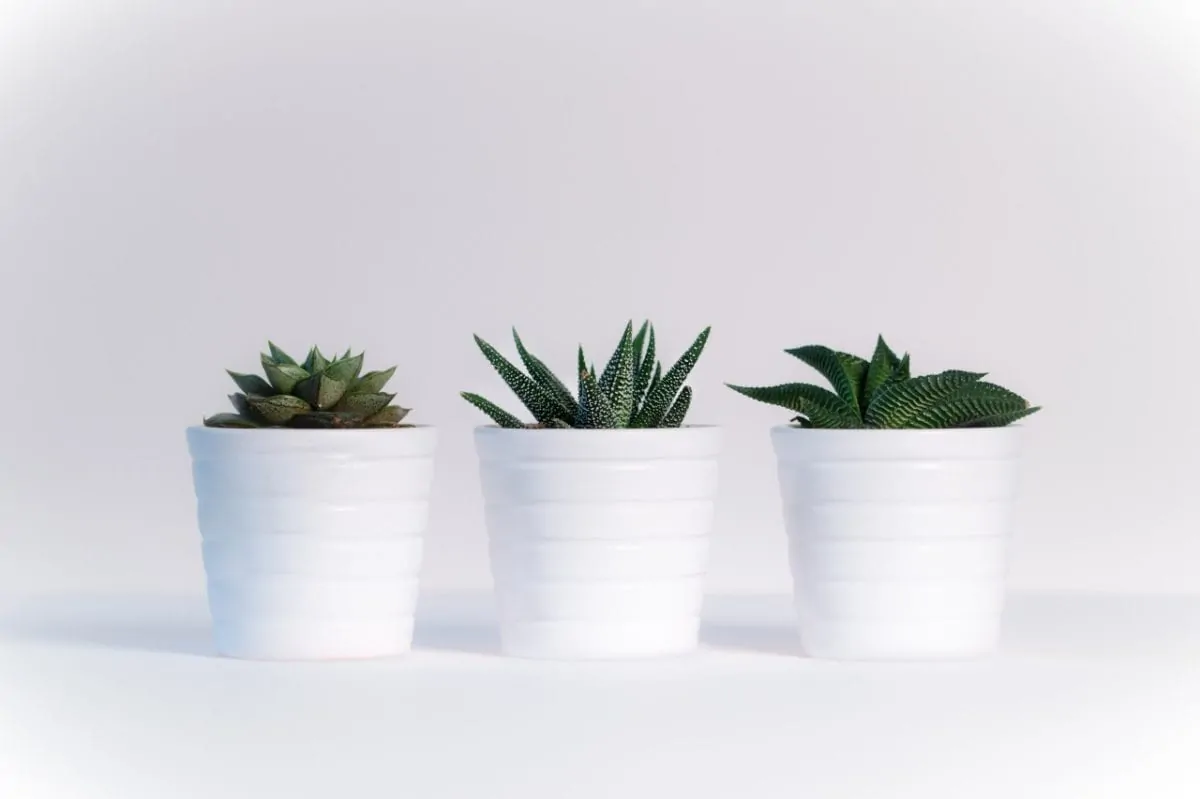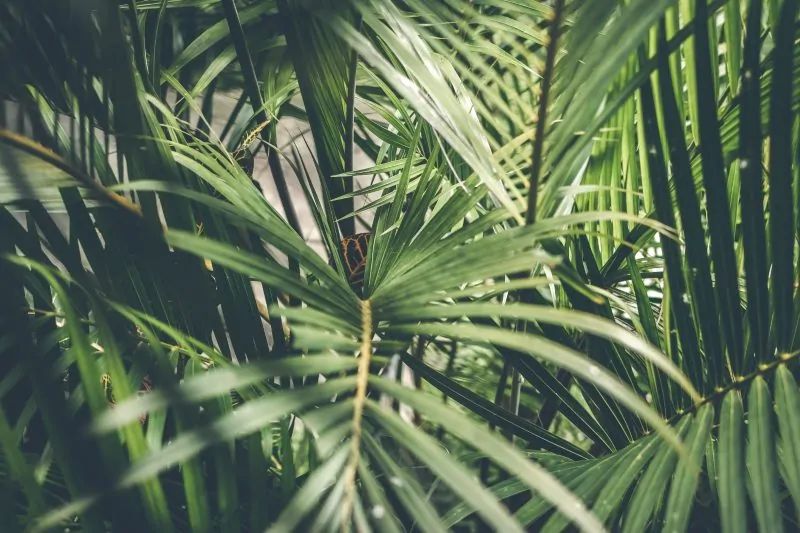


Palm trees have a special place in many plant lovers’ hearts and homes, as they bring a tropical look to every room they are put in, and, surprisingly, most of them are easy to take care of. So, here’s the good news! There are hundreds of types of palm trees you can choose from.
Yup, hundreds! And guess who put together a list of the most impressive types of palm trees? We did, so you won’t have to spend hours researching and choosing the one that fits you and your aesthetics best.
View this post on Instagram
Native to Madagascar, the Majesty Palm is suitable for both indoor and outdoor growing.
Even if it is not drought-tolerant, this majestic houseplant doesn’t require a lot of attention and can adapt and thrive in low light environments.
It also has an imposing presence and was the favorite royalty choice for decorative palm trees in the past.
View this post on Instagram
A list of the most impressive types of palm trees would be incomplete without the Areca palm.
Native from the island of Madagascar, the Areca palm is a popular indoor choice due to its fast growth rate – 6 to 10 inches per year.
It’s a bit needier, but the effort is more than worth it. So, if you just bought one, make sure it receives bright, indirect light. Full sun will scorch its leaves, and too much water will suffocate its roots.
View this post on Instagram
The Broadleaf Lady palm is a slow-growing houseplant native to China and Taiwan.
It is one of the most convenient options, as it can adapt to any kind light – from full sun to shade. Bright, indirect light is ideal for a healthy look, and its leaves will go darker when grown in a low light environment for a prolonged period.
View this post on Instagram
This palm tree gets its name after its gorgeous flowers that resemble the exotic bird of paradise.
It will look spectacular indoors, that’s for sure. However, it’s a fussy houseplant. It needs a sunny spot to flourish, and just like the most palms out there, it prefers moist soil, but not soggy, as it can easily suffer from root rot.
The Bird of Paradise also has a fast growth rate and will require fertilizer in its growing season.
Tip: Mist it from time to time to remove the dust from its leaves.
View this post on Instagram
Straight from the subtropical and tropical regions of the Americas, the Bamboo Palm is another well-known choice these days, as it’s appropriate for both indoor and outdoor growing.
Besides looking fantastic, this palm tree can also purify the air by removing harmful toxins such as formaldehyde.
It loves moist soil (not soggy!) and can adapt to almost any kind of environment. It’s best to place it in a spot with bright, indirect light.
Direct sunlight will scorch its leaves, while exposure to low light settings for a prolonged period will make it grow slower – and this palm is already a slow grower!
View this post on Instagram
The Parlor palm tree is the most known species from the Chamaedorea genus. Also known as Neanthe bella, it’s native to Mexico and Guatemala and has been around since Victorian times.
The Parlour palm is also a slow grower and can take about ten years to reach 4ft. So, if you want to buy a palm tree so bad, but don’t have enough space for it, the Parlour palm might be the answer!
Its growing requirements are similar to the other palms – moist soil and bright, indirect light will do the trick!
View this post on Instagram
Originating from Southeast Asia and New Guinea, this houseplant is also known as Table palm or Fan palm.
Compared to the other types of palm trees, the Footstool palm is a bit smaller in size and can reach a maximum of 6ft indoors.
It’s also a slow-growing palm, but its shape and beauty make up for that. You’ll definitely enjoy watching it grow!
View this post on Instagram
Names can be deceiving from time to time. The Ponytail palm is actually a succulent native to eastern Mexico.
It’s also a slow-growing houseplant, and just like the most types of succulents out there, too much care will kill it. A sunny spot, well-draining soil, and not so much water will do the trick. Make sure to let the soil dry out before watering it again.
Tip: If your Ponytail Palm’s leaves are turning yellow, you are probably overwatering it.
Don’t forget to also check out our article on the best indoor trees. There you’ll find a list of 30 of our favorite picks and instructions on how to care for them.
There you have it, our list of the most impressive types of palm trees. We’ll add more options to this list, so stay tuned!
In the meantime, let us know what’s your favorite palm tree or share your experience growing them in the comment section below.
Happy gardening!

Monthly updates on your favorite plants and how to keep them alive, delivered straight to your inbox!
Privacy Policy
This privacy policy outlines what info we gather from our visitors and contributors, the tools we use to collect, store, and protect it, and how we use this information.
Like any other website on the World Wide Web, YouHadMeAtGardening.com records some info about you and your device during your visit. This privacy policy outlines how our team gathers, stores, protects, and uses the information it gathers from visitors of the YouHadMeAtGardening.com website.
By continuing to use this website, you implicitly agree to this policy; if you do not agree to some or all of the procedures listed on this page, you can opt out at any time, however, you might not enjoy the intended browsing experience.
Our team reserves the right to alter this privacy policy with no prior notice to you. However, if the alterations made affect your personal data in any way, you will be notified immediately by email, on our homepage, or here.
Information YouHadMeAtGardening.com Collects
Our systems gather personally and non-personally identifiable information from visitors of the YouHadMeAtGardening.com website.
The only personally identifiable information we collect is your name and e-mail address only when leaving comments if you’re a visitor, or when submitting content and leaving comments, if you’re a contributor.
However, if you are not comfortable with providing your personally identifiable information to us, you can also use an alias instead of your real name and e-mail address without breaking any rules or regulations currently in use.
Note: If you submitted a comment using your personally-identifiable information and want it removed, you can always contact us and we will remove your info in 30 days.
The non-personally identifiable information we collect is your IP address, ISP information, device and browser info, and your browsing patterns – specifically the pages and websites you visit. This information cannot be used to track down your identity.
How We Collect Your Information
We use the following tools to gather personally and non-personally identifiable information from visitors and contributors:
• Cookies: these tiny text documents contain unique identifiers that are stored in your computer after your expressed consent. Cookies collect non-personally-identifiable information about your browsing patterns, which helps us pinpoint the areas of our website that require extra work and the areas that fully meet your needs.
• Log files: These tools record browser and device information, browsing patterns, websites that referred you to the YouHadMeAtGardening.com website, pages our website referred you to, and other types of non-personally identifiable information.
• Sign-up forms: these requests only come up when registering for our newsletter and is the only way our team collects personally-identifiable information from visitors.
How We Protect Your Information
All information we gather, both personally and non-personally identifiable, is stored in systems and databases managed only by the YouHadMeAtGardening.com team. We use the latest security measures to make sure the information you provide and the information we gather stays confidential, such as encryption, user behavior monitoring, and a series of managerial procedures.
How We Use Your Information
We only use your personally and non-personally identifiable information to improve the quality of the website and your browsing experience while here. We want to know which pages and sections of our website satisfy your needs and are of real value to you and which ones need improvement so we can make the proper adjustments. We also use your information to make sure the website is properly displayed on your device and browser.
If you choose to opt in for our newsletter, we will also use your information to keep in touch.
However, know that the YouHadMeAtGardening.com team will never share your information with other parties in exchange for financial rewards or any other kind of benefits. Some third parties might get very limited access to your info, but only to your non-personally identifiable information and only as we described above.
The personally identifiable information you provide is strictly confidential, therefore we will not share it with anyone.
Advertising
This Site is affiliated with CMI Marketing, Inc., d/b/a CafeMedia (“CafeMedia”) for the purposes of placing advertising on the Site, and CafeMedia will collect and use certain data for advertising purposes. To learn more about CafeMedia’s data usage, click here: www.cafemedia.com/publisher-advertising-privacy-policy
